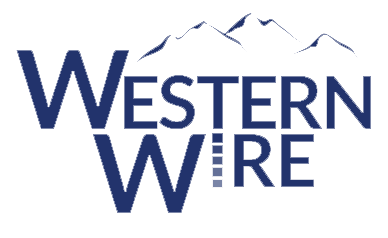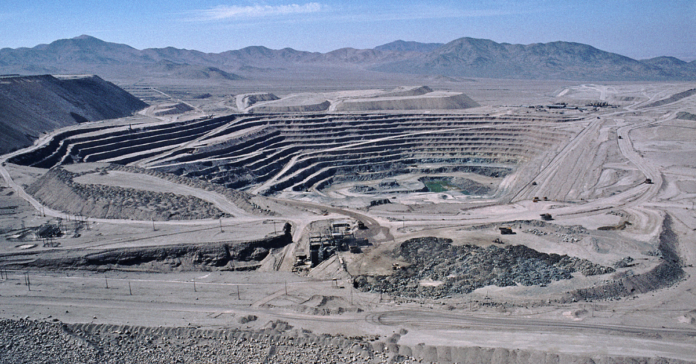A bill to halt oil and gas development via a 10-mile exclusionary zone surrounding Chaco Culture National Historical Park drew opposition from local residents and the representative governments located nearby at a subcommittee hearing yesterday.
H.R. 2181, sponsored by New Mexico’s Rep. Ben Ray Luján (D), calls for an end to oil and gas development and other mineral resource extraction in a 10-mile exclusionary zone surrounding the Chaco Culture park located in New Mexico.
Delora Hesuse, a Navajo allottee with private mineral rights gifted to her forebears, testified in opposition to H.R. 2181 before the House Natural Resources Subcommittee on National Parks, Forests and Public Lands Wednesday.
“Many people don’t understand our Native American heritage and the fact that many individual Navajo Nation members such as I own private lands and the minerals underneath them,” Hesuse told the committee. But the access, development, and production of mineral resources means more than just private property rights but stands as a substantial source of income for Hesuse and her fellow allottees, she said.
“This is a steadfast personal property right that sustains our livelihoods and way of life. H.R. 2181 would put many of our mineral rights off limits and stop a much-needed source of income to feed, shelter, clothe and protect our families. I’m not exaggerating the importance of this income. In 2015, the Federal Indian Minerals Office distributed $96 million to 20,835 allottees. That’s a significant source of income in an area that continues to struggle with unemployment,” she added.
The identical Senate version of the bill, S. 1079, is co-sponsored by both of New Mexico’s U.S. Senators, Tom Udall and Martin Heinrich.
“My ancestors were allotted the land and mineral rights by the United States government many generations ago, and it pains me to see that my own leaders, both tribal and in the U.S. House of Representatives and Senate, are supporting a bill that would put my oil and natural gas rights off limits and/or seriously prevent my family from receiving income from the valuable energy resources that we own,” Hesuse continued.
Subcommittee Chairwoman Deb Haaland (D-N.M.) disagreed, arguing that the region, threatened by development, required additional protections.
“With the Trump administration’s continued push for energy dominance, these sacred sites and national treasures are threatened by extraction,” Haaland said.
“Extraction in this sacred place will only scar our land, contaminate our air and water, and create health risks for our community,” she added.
But Hesuse countered with evidence that substantial opposition to the bill’s language exists within the allottee community, and in the Navajo chapters that represent the residents who live near the cultural site.
She presented a petition signed by 131 Navajo allottees that opposed the exclusionary zone proposed by the bill. She also pointed to two additional resolutions from 2018—from her own Nageezi chapter and the Huerfano chapter—that also opposed the idea of a exclusionary buffer zone and called for more input from the allottees as well as stakeholder meetings with New Mexico’s legislators.
Hesuse added that the recent Interior Department decision to impose a one-year leasing halt in the area was also disappointing.
“I am disappointed that the Department of the Interior, which is supposed to manage our mineral rights in trust to the benefit of my family and all other allottees, has stopped leasing for a full year. This action delays income to us allottees in the short term, but more importantly, sends a strong signal to oil and gas companies that generate the income on our behalf that investment in the area is risky and uncertain in the long term,” she said.
Last week, Interior Secretary David Bernhardt called for the Bureau of Land Management to draft a Resource Management Plan “that includes an alternative that reflects the tribal leaders’ views and the proposed legislative boundaries,” as well as to defer leases within the proposed 10-mile exclusionary zone for one year, in order to give Congress a chance to weigh in on the legislation.
A new June 2019 resolution by the Nageezi Chapter representing Navajo allottees noted their opposition to the bill “that would permanently stop new oil and gas development on federal lands within ten (10) miles of Chaco Cultural National Historical Park” and that Udall and Heinrich “didn’t consult with them on the proposed 2019 Chaco Cultural Heritage Protection Act.”
“[T]he Navajo Allotment Land Owners are still willing to sit down with the two U.S. Senators to discuss” the bill, the resolution stated, rejecting the promises that the exclusion zone proposed in the bill “will not affect new oil and gas development on Navajo Allotment Lands and Navajo Trust Lands.”
“Navajo Allotment Owners know it is not economical for oil and gas companies just to have new oil and gas development on Navajo Allotment Lands which will lead oil and gas companies to cease new oil and gas development on Navajo Allotment Lands,” the resolution continued.
The resolution was passed on June 2, with 20 voting in favor, none opposed, and three abstentions.
The resolution called for the exclusionary zone to be reduced to five miles, and for Interior Secretary David Bernhardt to not support the 10-mile zone either.
The Nageezi Chapter, representing as many as 3,000 residents and one of the largest chapters in the Eastern Agency of the Navajo Nation, expressed concerns about the effects that such a bill would have to “infringe on their royalty payments” given the “very depressed economic state” in the region. “[S]uch development of natural resources benefit Navajo families by improving their livelihood,” they argued.
They also expressed deep concern about “self-serving special interest organizations [that] are violating the rights of the Navajo Allotment Land Owners,” such as outside environmental groups.
“Navajo Allotment Land Owners do not share opinions of environmentalists voicing their objections on natural resources developments. These over publicized objections by the environmentalists have drowned out and overshadowed Navajo Allotment Land Owners Rights,” the resolution added.
In her testimony Hesuse added that drawing the exclusionary buffer zone would restrict the way allottees’ mineral rights could be accessed.
“While the bill claims not to affect my mineral rights, in fact, many allottee lands are surrounded by federal lands that would be withdrawn by this bill. If BLM lands are withdrawn around our allotments, that means oil and gas companies cannot access our lands, because they won’t be able to access the federal lands,” she explained.
The unique topography and surface land rights combine to thwart development, if access to neighboring federal lands are withdrawn.
“Furthermore, since the oil and gas is accessed using horizontal drilling, putting the federal lands and minerals off limits will mean my minerals are also off limits. Because of the checkerboard pattern of lands, where allottee lands are often surrounded by BLM lands, particularly in the northeast segment of the buffer, if companies cannot access all minerals along the lateral of a horizontal well, they will not access any,” she said.
The upshot of her testimony, Hesuse concluded, is that Navajo allottees like her are very concerned about their cultural heritage, and the protections of antiquities and the environment already afforded by other legislation.
“I too care deeply about the Chaco cultural heritage. After all, I’m a Navajo who lives right in the Greater Chaco region. But the Chaco Culture National Historic Park already protects the Great Houses.
Artifacts that may be outside the park are protected through the National Historic Preservation Act. Any development of my minerals and the minerals of other allottees is done in strict accordance with the act, to make sure they are protected. Not only do we insist upon it, but that is the law of the land,” she said.
Michael D. Nedd, Deputy Director for Operations for BLM, told the committee that “the Bureau of Land Management (BLM) has made it a top priority to responsibly develop the vast domestic energy resources on public lands to create jobs, lower costs for working Americans, and build a strong economy.”
Nedd pointed to the $1.3 billion in revenue generated from mineral development on federal lands that went to New Mexico in the past year, mostly from oil and gas, with $634 million headed to the state’s coffers directly.
Nedd acknowledged the direction offered by Bernhardt. “The Secretary also recognizes there are some places that may benefit from enhanced protection. Striking the appropriate balance for public lands use – whether it be energy development, recreation, grazing, or historic preservation – can be a challenge, but it is a mission the Department takes seriously,” he said, as the agency works on the draft RMP.

